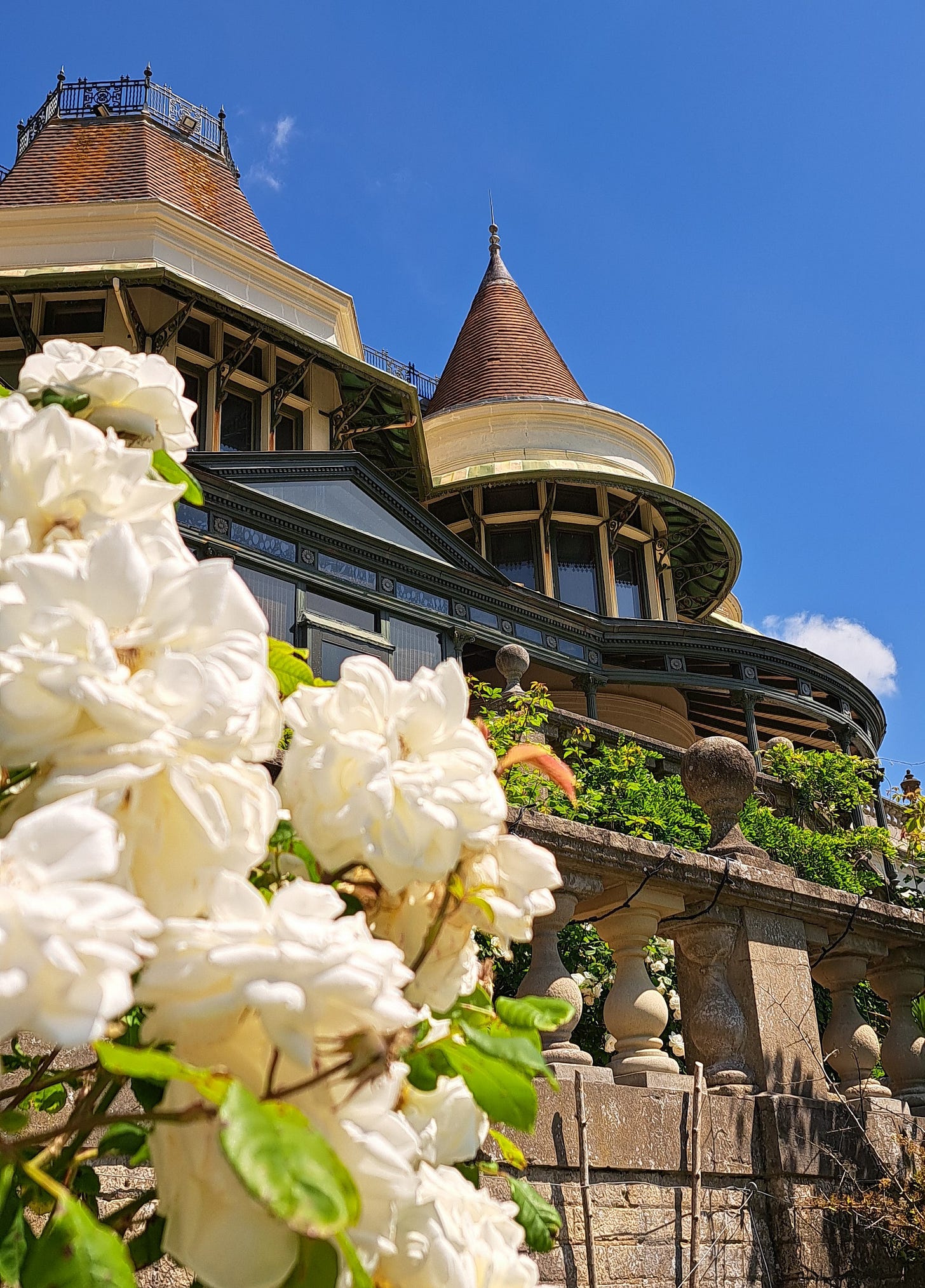
It might not be a unique claim, but one of Britain’s favourite seaside resorts is unusual in having a fascinating historic art gallery and museum slap bang in the middle of a beautiful seven-mile beach. We’re talking Bournemouth, from where Victorian hotel entrepreneurs Annie and Merton Russell-Cotes scoured the globe for interesting objects and spectacular art treasures, then presented the lot - including the Gallery they built - to their fellow townsfolk, in perpetuity.
This couple created a wonderful landmark building. Even its architecture is unique. While the burghers of the burgeoning Victorian cities in the North went for the classical look, Annie and Merton briefed Irish architect J.F.Fogarty to help them come up with a style all their own. Experts say it’s Art Nouveau - to me it looks like they went the full Disney, when Walt was just a gleam in his father’s eye. It’s an absolute knock-out and when you see the Gallery in its cliff-top setting, with the beach below, I defy you not to be impressed.
Annie and Merton, however, are not the focus of this Substack - I’ve written about them before and you are welcome to pop into my archives if you missed it. (Go on, have a quick look, their story is compelling). Just the other day I dropped into the RCAGM (as we shall call it for brevity) to view their latest feature exhibition A Painter in Paris - Albert de Belleroche.
Albert (1864 –1944) was a decent painter, but for me it’s his mastery of black-and-white which makes him a stand-out artist. And happily RCAGM has a really good selection of his charcoal and graphite drawings in this show. Most of them are presented as lithographs, which was the medium in which Belleroche truly excelled and for which he was rightly lauded in his lifetime.
The British Museum, which has a fabulous collection of Albert’s lithographs, rates his lithographs as “amongst the greatest achievements of the craft since its discovery”. Many museums have collections of Belleroche lithographs and he merits two rooms at the Musée de l'Orangerie (not D’Orange as the RCAGM curators have it) in Paris.
Belleroche may not be terribly well known today, but as a student in Paris he mixed with the greats who certainly influenced his work and inspired him to a level I suspect he wouldn’t have achieved otherwise.
His background was not typical of those who made up Paris’s artist community during La Belle Époque. Often claimed as a Welsh artist, his time in the Principality was rather fleeting. He was the son of a French aristocrat (hence the de) and his Belgian mother was also of high birth. Albert’s father, the Marquis de Belleroche, died when the boy was three and his mother moved to London, marrying a minor politician called Harry Vane Millbank. Albert took his mother’s new surname and remained, rather prosaically, Albert Millbank until he was 30.
Albert was always artistically inclined, but it was Paris which sets his talents alight. Albert’s close friend at Carolus-Duran’s atelier - and for years after - was the spectacularly talented American, John Singer Sargent. In the RCAGM exhibition there is a lithograph portrait of Albert, from 1905, by his friend Sargent in which he looks the epitome of a well-heeled habitué of London’s St James’ clubland.
He was a very different chap in the early 1880s. Elegantly avant garde in appearance, Belleroche threw himself into the gaiety of Paris with gusto. There are suggestions in some literature that Albert was gay. Certainly his friends included Oscar Wilde and some male artists known to have emotional relationships with other men. I neither know, nor care - it doesn’t affect my view of Albert’s work either way. Also, set against these suggestions is Albert’s long and passionate relationship with one of the city’s best known artist models - Lili Grenier - whom he met while visiting Toulouse-Lautrec. Lili was Lautrec’s muse, but Albert ultimately persuaded Lili to leave Lautrec and they stayed together for 10 years.
Americans in Paris
Albert’s great good fortune was to join the atelier of renowned French portraitist Carolus-Duran. It was a complete fluke of an introduction. Carolus-Duran was hired by Albert’s stepfather to paint Mrs Millbank. While at the couple’s home he happened across some of Albert’s drawings, liked them a lot and suggested the young man should study under him in Paris. It was the pivotal moment of Albert’s career - and life. There he met Singer Sargent, the outstanding member of a very talented group of Americans who studied with Carolus-Duran. and they remained close friends until Sargent’s early death.
Americans seem to have been particularly drawn to this teaching school and the list of those who painted and studied there is a Who’s Who of the American artists who travelled to Europe to study. They include Carroll Beckwith, whose better known works include portraits of Mark Twain (the image with the wild hair and the corn-pipe) and Theodore Roosevelt. Beckwith was respected enough by Carolus-Duran to work with the Master and Singer Sargent on murals during the restoration of the Palais du Luxembourg. Another significant American was Kenyon Cox, one of the major muralists of the USA, who was fortunate to be in his prime when some of the great State Capitol buildings were erected and also the Library of Congress.
It was a golden period for Albert de Belleroche, known and accepted by the likes of Lautrec and Renoir and bed-mate of the admired Lili Grenier. Belleroche finally - and very uncharitably - ditched Lili when he met the woman who was to be his wife. As I have mentioned before in Substacks, the treatment of artist models was frequently churlish and - by today’s standards - abusive.
Although his family’s wealth meant that Belleroche could be extremely diffident about commercial work and very picky when he accepted commissions, he was nevertheless in strong demand as a portraitist. One commission he did accept was from the sculptor Jules Visseaux to portray his daughter, Julie. Belleroche fell for his subject and soon proposed. When Lili heard she reacted with fury.
As for Julie, she was not prepared to tolerate any of Albert’s previous dalliances and louche behaviour and laid down ground rules for their married life in which Albert had to foreswear any further contact with Lili and to cut his contacts with Paris. The couple were married and moved to England, eventually settling in Hampstead, London.
In contrast to his fortunate start in life and his fame as a lithographer, Albert de Belleroche’s life ended in less glamorous circumstances. During WW2 he and Julie moved to Nottingham, which Albert felt was safer from bombing. They stayed until his death in 1944, living in rooms at the Crown Hotel while Albert retreated daily to a small studio he rented nearby.
So if any of this inspires you and you’re near Bournemouth this summer, look out for the signs to the RCAGM, just above the town’s main pier. And stay for a walk around the main collection and the elegant Victorian galleries.
Taking a stand for art gallery visitors
Before we leave the RCAGM I’d like to point out a feature of the place which really sets it apart from most galleries for me - and it’s a subject about which I am getting more and more uptight. Seating. RCAGM has lots and lots of it which makes viewing their exhibits a particular pleasure. There are benches, comfy old sofas, window seats, all sorts….it makes the old place a positive delight. But why, oh why, are there so few opportunities to sit and contemplate painting in most other galleries?
I was very encouraged to hear the marvellous Mary Beard sounding off on the same subject at last year’s Museum of the Year Awards where she spoke as one of the judges. Like Mary, I spend time focussed on just a few paintings when I visit a gallery - and as I am not exactly in my prime, standing for long periods is uncomfortable bordering on impossible. I know many galleries have those rather wonky metal contraptions, like a cross between a walking stick and a chair, which they let you lug around to the annoyance of all concerned. But to really enjoy gazing at an artwork you need to be properly comfortable.
Anybody agree with me?
A Painter in Paris: Albert de Belleroche, Russell Cotes Art Gallery & Museum, East Cliff Promenade, Bournemouth BH1 3AA. Until 22 September, 2024.




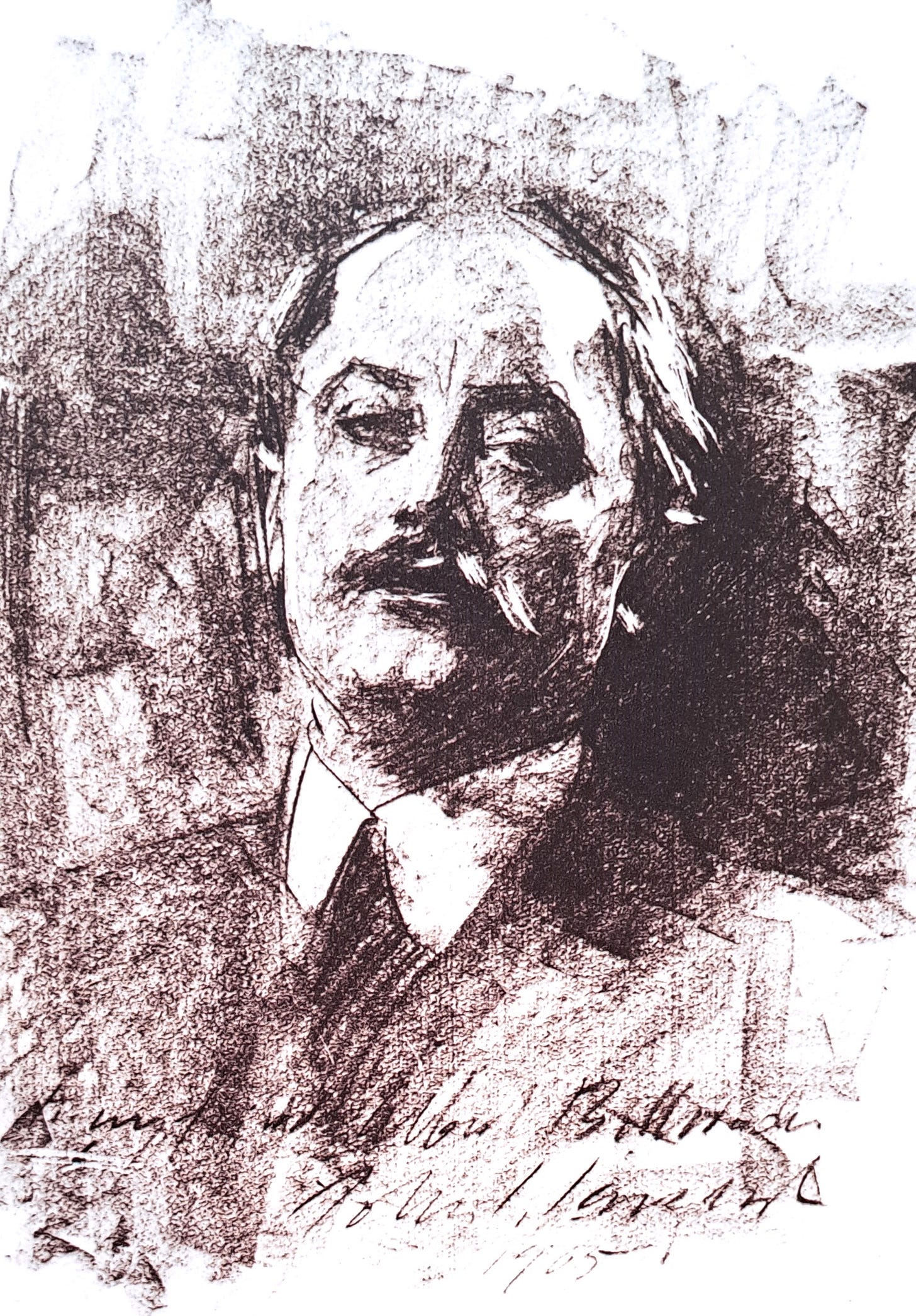
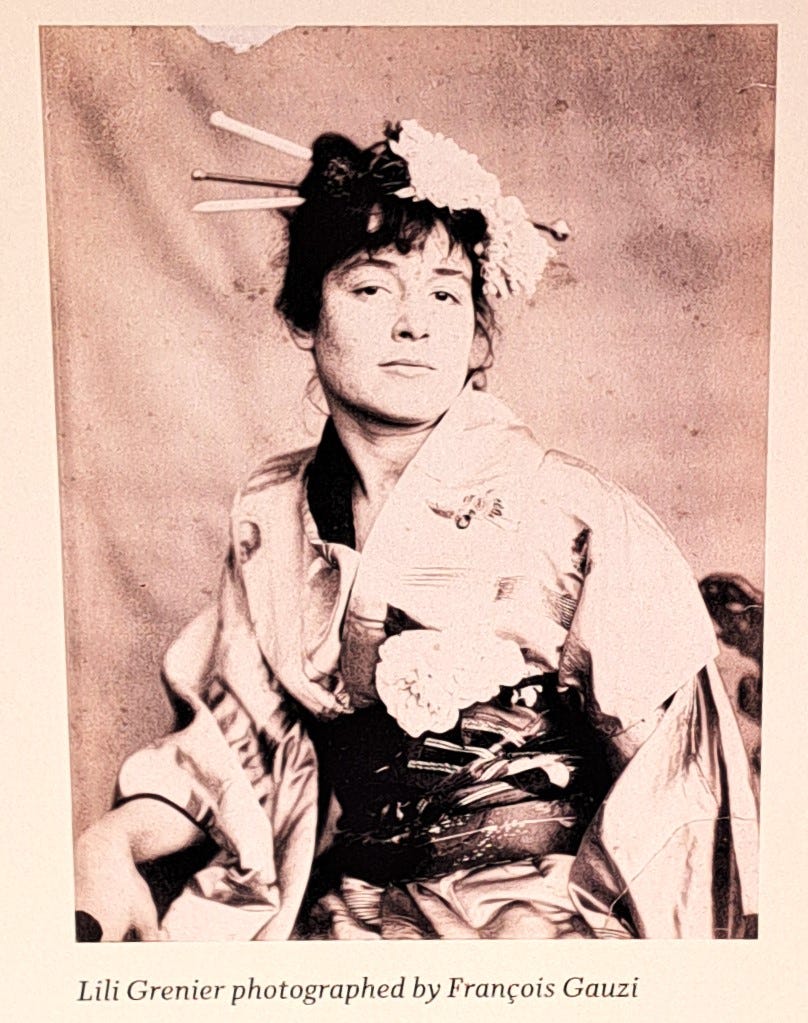
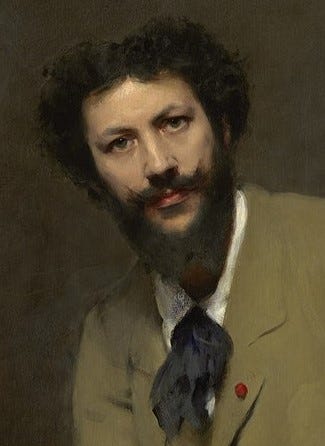
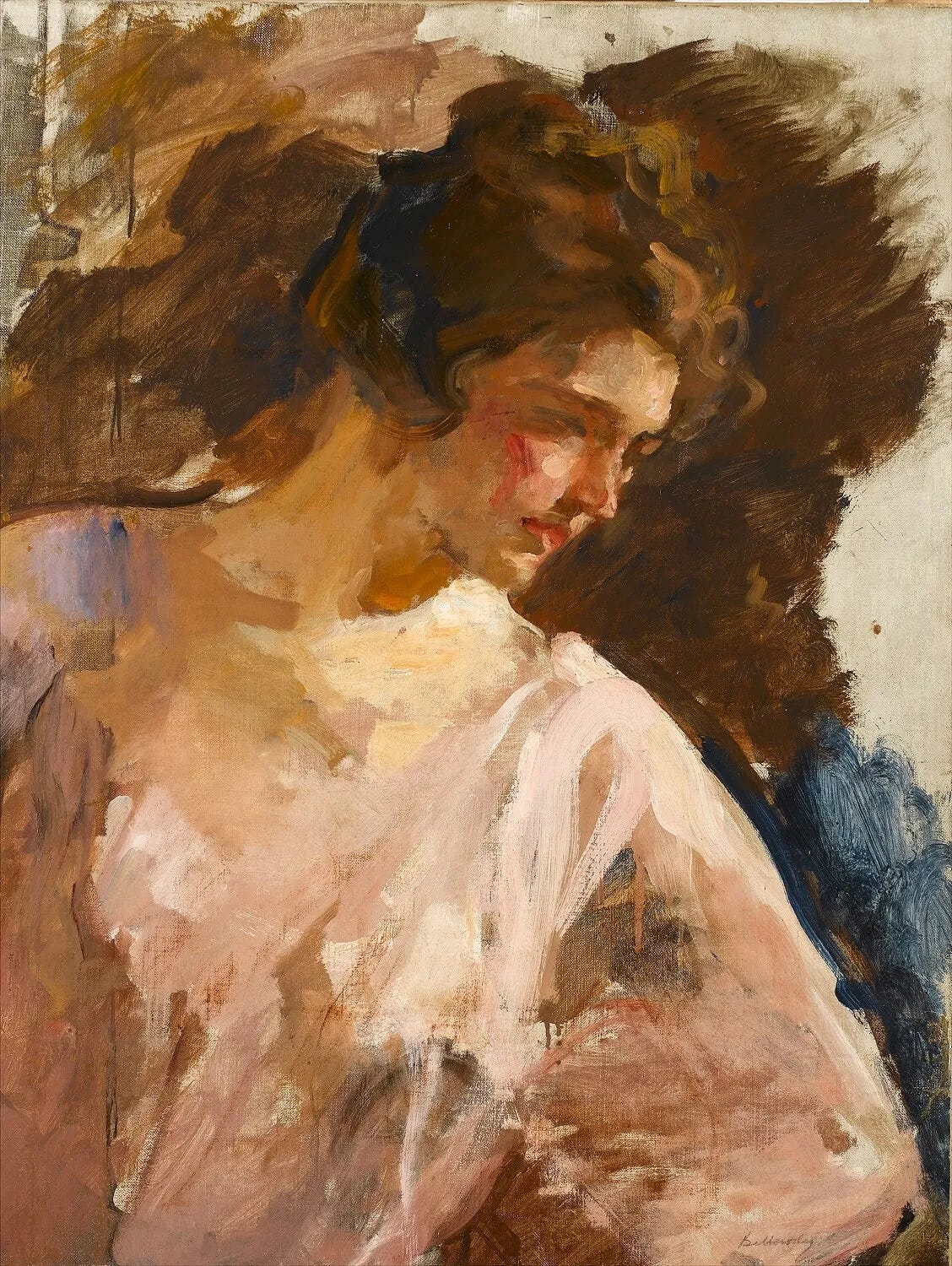
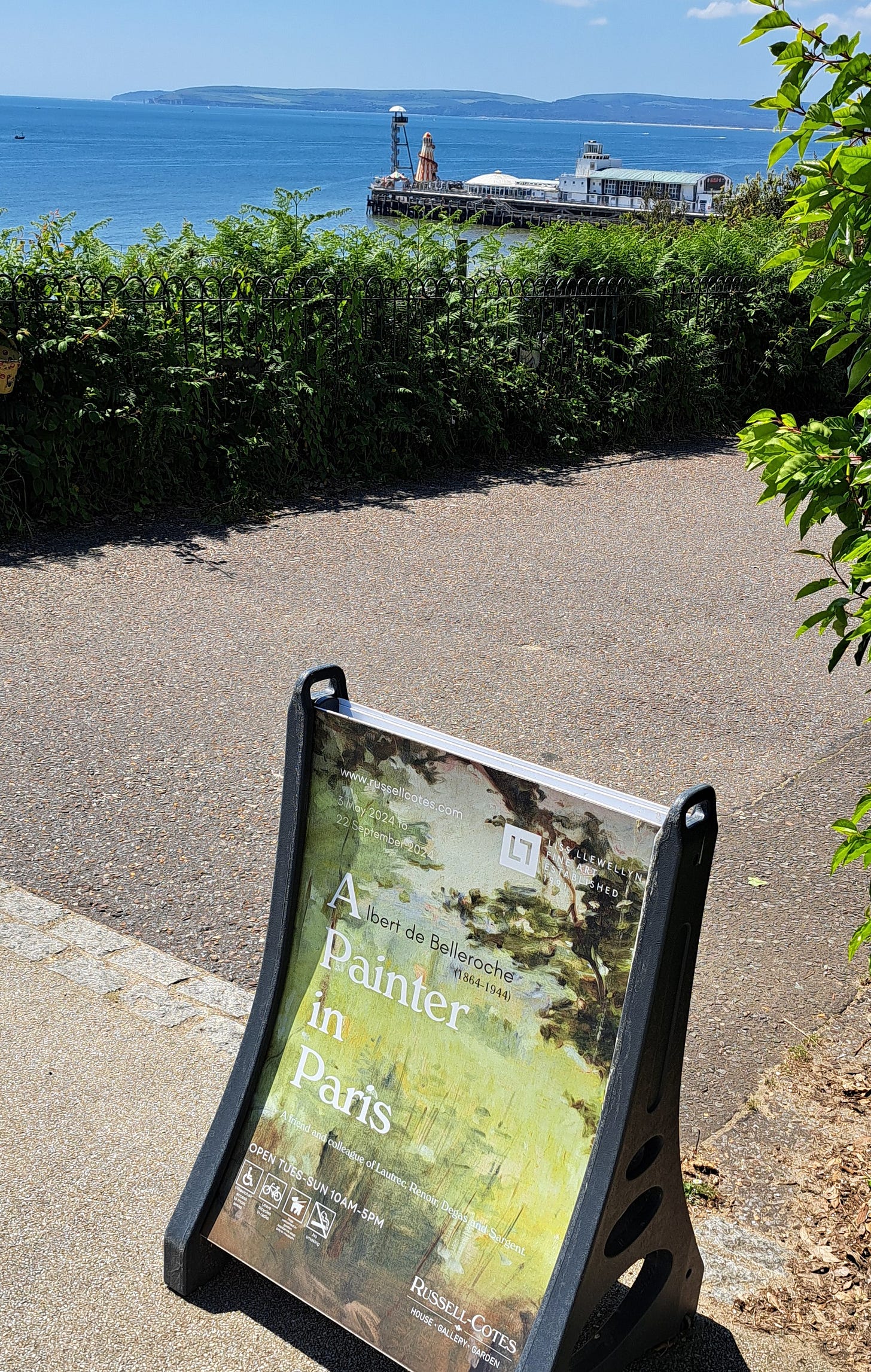
Oui, elle s'en fiche !
Peter- Thanks for sharing this. I might just have to plan on a British seaside excursion just to see this building. Hope you're well this week. Cheers, -Thalia